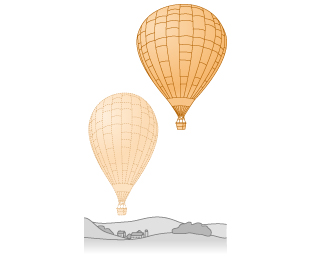
A research balloon contains 2.00×103 m3 of helium gas at a pressure of 1.05 atm. The balloon sits in a large 15 degrees C lab at sea level. The balloon and basket of research equipment comprise a total mass of 500 kg, and the balloon is tethered to the ground. To simulate the effects at high altitude, the technicians pump down the sealed lab to a pressure of 0.700 atm. Assume the helium behaves like an ideal gas and the pressure change is too rapid to permit much heat exchange with the surrounding air.
What is the simulated altitude at a pressure of 0.700 atm?
What is the change in internal energy of the helium?
The scientists repressurize the balloon to 1.05 atm and then release the balloon. By the time it rises to the altitude where the pressure is 0.700 atm, how does the change in internal energy of the helium compare to what occurred in the lab?
